Resources
6 min read
With the development and increased usage of cloud-native technologies, containers, and microservices-based architectures, log monitoring has become a fundamental component of effective management for organizations. Logs offer users insights into occurring issues and assist them in understanding how their software performs over time, where it excels, and where it fails.
Log monitoring lends itself to being utilized in a variety of other monitoring practices, including infrastructure monitoring, server monitoring, network monitoring, application performance monitoring, database monitoring, and cloud monitoring.
Within this article, we will define what log monitoring is and its benefits, as well as outline the use cases of the process before listing the leading log monitoring tools currently available.
Contents
What is Log Monitoring?
Log monitoring is the process of reviewing and analyzing log files produced by computer systems, applications, and networks to highlight patterns, locate anomalies, and guarantee operational health and security. Logs collect a broad range of information, such as user activities, system events, error messages, and performance metrics. By monitoring these logs in real time, organizations can promptly spot and respond to issues such as system failures, security breaches, and application errors.
Why You Should Conduct Log Monitoring
We’ve outlined that log monitoring is a crucial process for numerous organizations, but it’s particularly important to understand the full extent of the benefits that log monitoring can offer your organisation.
To begin with, log monitoring solutions often provide a fully centralized experience. This means that users can pull together various logs from different sources and view all their system and application logs in one place. This supplies a holistic view of the entire IT environment. This makes it much simpler to correlate events and identify patterns that might indicate underlying issues or security incidents, facilitating effective monitoring and troubleshooting.
Also, monitoring logs can be effectively utilized to improve system reliability and performance. Tracking system events and performance metrics enables IT teams to promptly identify and rectify issues such as hardware failures, software bugs, and network outages. This reduces downtime and helps to ensure that systems are working smoothly and efficiently. Furthermore, the solution aids in capacity planning and resource management by offering insights into system usage patterns and trends, allowing organizations to optimize their infrastructure and prevent performance bottlenecks.
Lastly, with log monitoring users can gain from simplified root cause analysis and troubleshooting. When issues arise, detailed logs offer a historical record of events leading up to the problem, making it simple for IT teams to diagnose and fix the underlying causes. This lessens the time and effort required to resolve incidents and prevents recurring problems by addressing their root causes.
Log Monitoring: Drawbacks
Log monitoring offers significant benefits to users and organizations but it isn’t without its drawbacks. An example of one of these constraints is data siloing, whereby generally fragmented and isolated data repositories are created. When logs are independently collected and stored by numerous departments or systems, creating a single, unified view of the performance of an organization or security posture becomes challenging. Such isolation makes it difficult to effectively correlate and analyze data, which could end up creating potential blind spots and missing out on opportunities for optimization or anomalies to detect.
Especially when using open-source tools, a notable drawback of log monitoring is the high cost of data ingestion. Open-source solutions could be highly attractive from an initial viewpoint because of their low upfront costs. However, they often end up being quite costly as the volume of ingested data scales up. They often require great computational resources and storage capacity to handle the high loads of log data from various sources. As data grows exponentially, so do the costs related to infrastructure, such as servers, storage devices, and network bandwidth. Moreover, the need for the right personnel to manage, maintain, and optimize such open-source systems drives costs up.
Lastly, another disadvantage of log monitoring is the potential to yield enormous volumes of data in logs, leading to analysis paralysis and inefficiency. Given that systems and applications are highly capable of producing a large volume of log entries, it sometimes becomes hard to show meaningful insights from the noise.
The Best Log Monitoring Tools
Having outlined the importance of log monitoring, the benefits of the process, and how it can be effectively used to enhance the operation of a variety of monitoring practices. We have listed the leading log monitoring tools to enable you to make the appropriate selection. This list separates proprietary and open-source tools allowing you to consider the benefits of each solution.
Proprietary Log Monitoring Tools
BetterStack
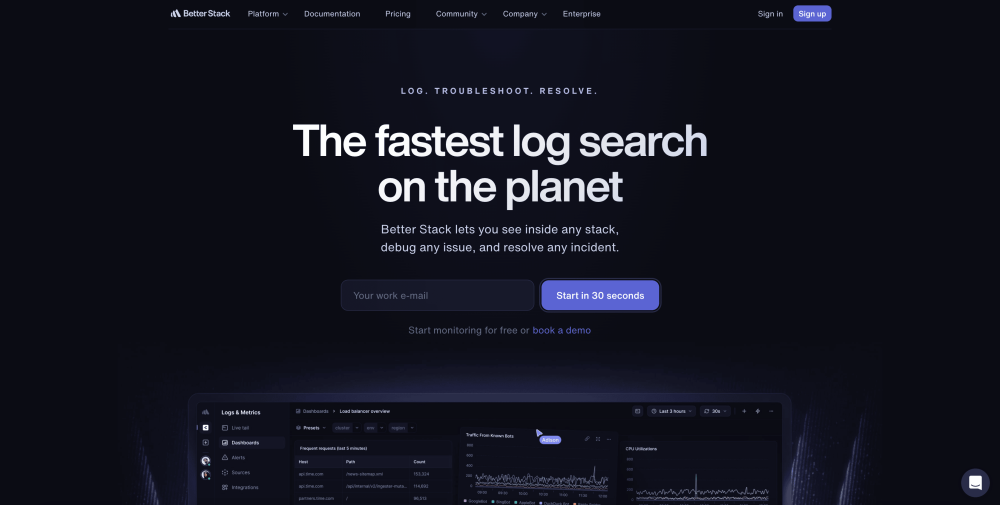
BetterStack Logs, is a log monitoring solution that boasts ‘the fastest log search on the planet’. The solution aggregates all your logs from servers, apps, containers, clusters, and cloud providers into structured data you can query like a single database with SQL. As well as this BetterStack Logs offers collaborative dashboards that enable you to resolve incidents faster.
Logit.io
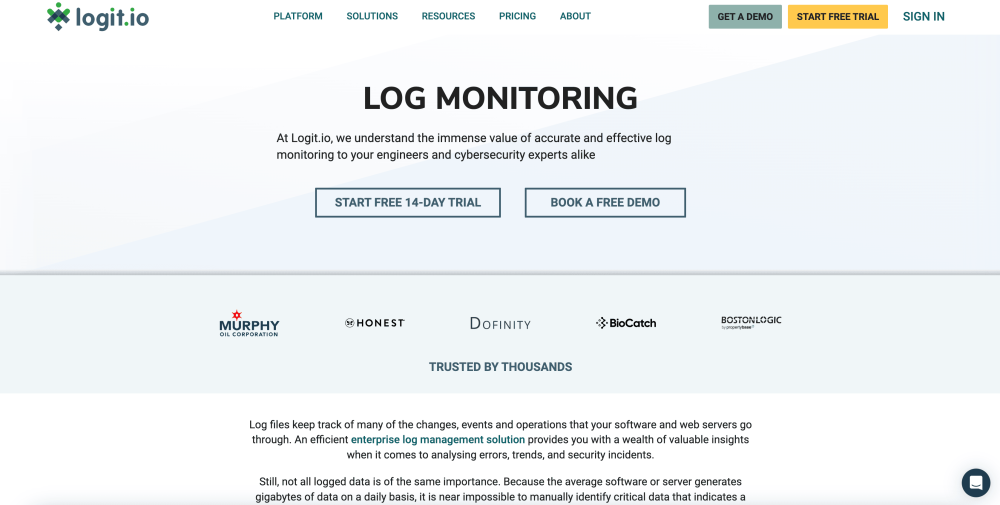
Logit.io offers an extensive centralized log monitoring solution that enables you to attain alerts of every noteworthy incident and trend enhancing the performance of your IT systems. The Logit.io solution is built upon the ELK stack allowing you to quickly begin ingesting and contextualizing logs before visualizing them via our Hosted Kibana tool. Also, log monitoring from Logit.io offers flexibility in tagging, classification, and filtering to ensure you make the most of your log and metrics data.
If you’re interested in finding out more about Logit.io’s powerful log monitoring solution, feel free to contact us or begin exploring the platform for yourself with a 14-day free trial.
Sematext
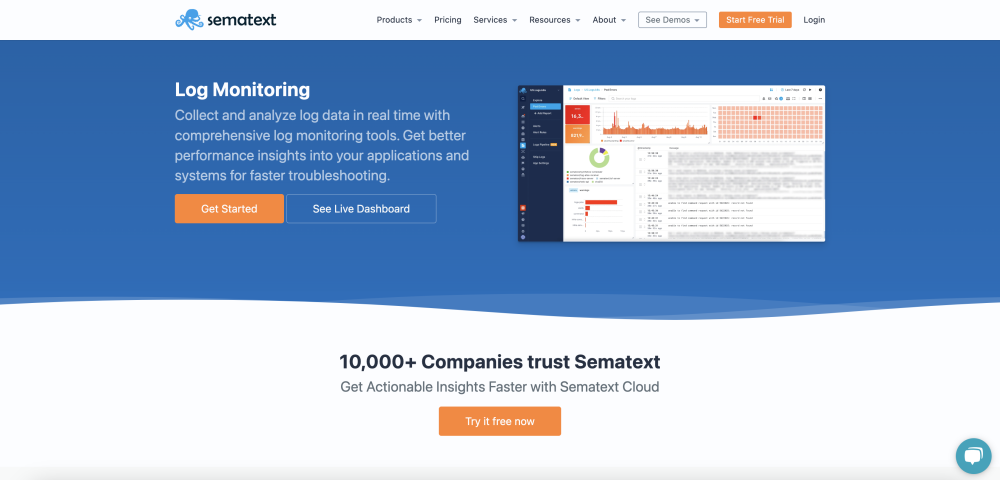
Sematext’s log monitoring tool helps you attain better performance insights into your systems and applications, facilitating quicker troubleshooting. With this solution, you can design dashboards connecting logs, metrics, and infrastructure data for system-wide visibility in real time. Also, configure meaningful alerts to be informed before your users can spot the issues.
Open Source Log Monitoring Tools
Graylog
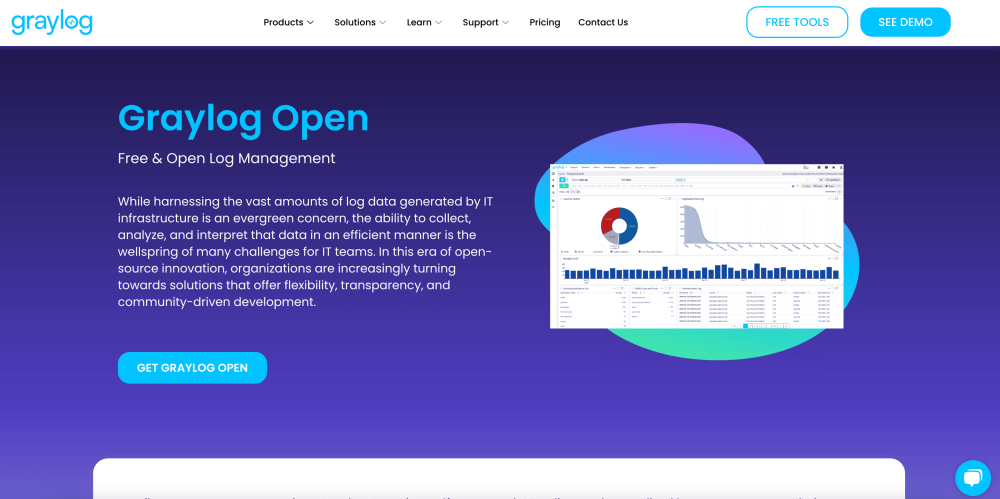
Graylog Open is a free and open-source log management and monitoring tool. The solution offers unlimited log ingestion and enables you to view all your log data in real-time. Also, with this tool, it’s simple to configure alerts to ensure that you don’t miss any unusual activity and can react promptly. As well as this, Graylog Open can be utilized to build search queries and initiate common analyses quickly.
OpenObserve
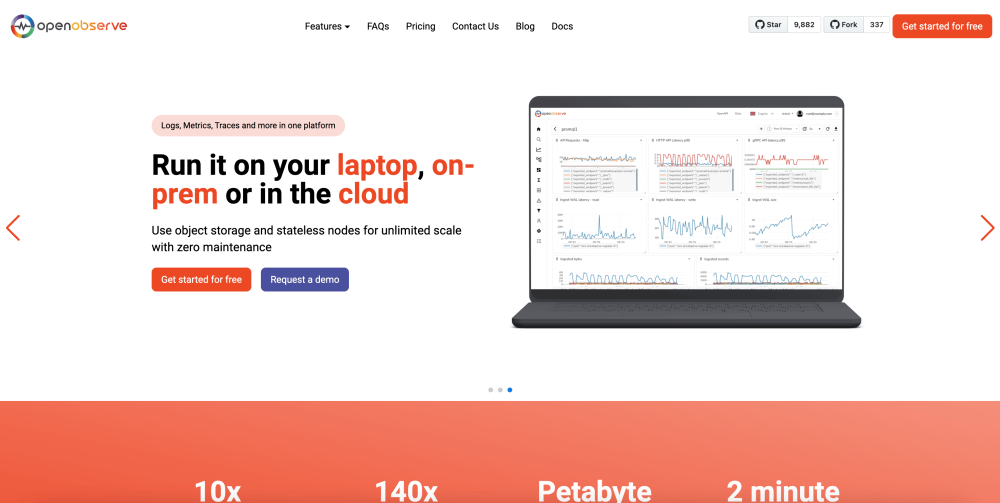
OpenObserve is a simplistic open-source observability tool with powerful log search and monitoring capabilities. The solution offers scalable search functionality allowing you to search everything. Lastly, OpenObserve allows you to process, enrich, redact, and reduce logs.
SigNoz

SigNoz is an open-source observability platform that enables you to monitor and analyze logs with dashboards and alerts via a query builder. SigNoz follows the OpenTelemetry approach for logs and to send logs to SigNoz you will most likely need to use the OpenTelemetry collector. With this solution, you can ingest, process, and analyze logs at any scale.
If you've enjoyed this article why not read Leveraging Log Monitoring for Superior SaaS Performance or The Critical Role of Log Management in SaaS Environments next?
